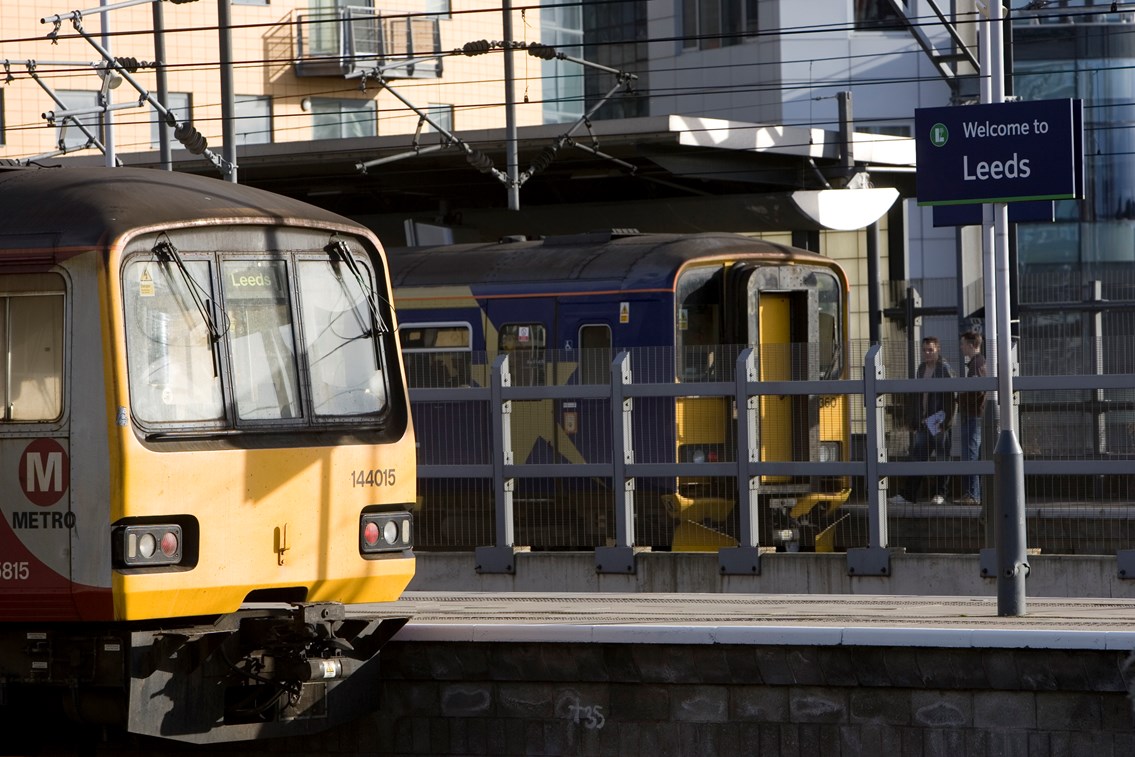Friday 26 Sep 2008
A PLAN FOR GROWTH: NETWORK RAIL LAUNCHES STRATEGY FOR YORKSHIRE AND HUMBERSIDE
- Region & Route:
- National
A plan to meet the increasing demand for rail in the Yorkshire and Humber region was unveiled today as Network Rail launched its consultation on a far-reaching strategy to boost services for passengers and freight users throughout the region.
Covering routes such as Leeds to Bradford, York and Hull to Leeds and Manchester, and Sheffield to Manchester as well as important freight routes to the ports, the Yorkshire and Humber route utilisation strategy (RUS): draft for consultation outlines how Network Rail proposes to deliver a network capable of coping with the predicted growth in rail use over the next ten years.
Under the proposed strategy rail users could expect additional services, longer trains with more seats, as well as quicker journey times and better connections. The plan also includes options to carry out station upgrades such as building new platforms, and improving track layouts to increase capacity and reduce delays. Freight routes in the region will also benefit through gauge enhancement schemes to allow bigger containers to be carried, providing a boost to the ports and terminals they serve.
Demand for rail commuting into important economic centres such as Leeds, Sheffield and Manchester, and freight services has grown considerably in recent years. The plan identifies what schemes and options need to be developed to help ease the pinch-points and improve rail services for passengers and freight users.
David Pape, route director for Network Rail said: “The growth in demand for rail throughout the Yorkshire and Humber region is excellent news for the industry, but this success brings us more challenges as we work to deliver a rail service passengers and freight users expect and demand.
“The publication of this draft strategy to meet these challenges marks the start of our consultation. The feedback we get will play an important role in shaping the future of the railway throughout the region.”
The consultation will last 12 weeks and, following consideration of any comments, the final document will be published in spring next year.
The options to address capacity and capability requirements being considered as part of the consultation include:
2009 – 2014
- Trains will be lengthened and additional shuttle services will be provided at peak times on key commuter routes to relieve overcrowding
- Additional turnback facilities at a number of locations
- Journey time improvements between Leeds and Manchester
- Platform lengthening schemes on a number of lines
- New southern entrance for Leeds station and additional platforms
- Gauge enhancement schemes for freight services on some key arteries
2014-2019
- Continued train lengthening to manage ongoing peak time demand increases
- Leeds – Manchester journey time to be cut down to 43 minutes on the quickest services
- A ‘standard hour’ service of three trains per-hour between Sheffield and Manchester
- Improved journey times between Leeds and Sheffield via Barnsley
- Capacity enhancements between Leeds – Manchester (via Diggle), Gilberdyke - Hull, Wrawby Junction – Brocklesby and Sheffield - Manchester for additional passenger and freight trains
- New generation of trains to replace the existing Pacer and Sprinter fleet across the region, supplementing the new intercity fleet serving the East Coast main line to London, York, Leeds and Scotland.
- Improved track layout at Sheffield, and Doncaster to increase capacity and reduce delays
- Gauge enhancement schemes on further key freight arteries
Notes to editors
- The strategic routes covered by the RUS are primarily the North Transpennine, North and West Yorkshire, and South Transpennine, South Yorkshire and Lincolnshire routes. - The RUS process is led by Network Rail on behalf of the rail industry. A number of rail industry organisations are involved in the process including train operating companies, freight operating companies, ATOC, the ORR, Passenger Focus, DfT, South Yorkshire PTE, West Yorkshire PTE, and local authorities. - The Yorkshire and Humberside RUS adjoins the infrastructure covered by the already published strategies for the East Coast main line, and the North West, and Lancashire and Cumbria, as well as the East Midlands RUS which is due to be published next year. - Click on the following link to find out more about the RUS programme: http://www.networkrail.co.uk/aspx/4449.aspxContact information
Passengers / community members
Network Rail national helpline
03457 11 41 41
Latest travel advice
Please visit National Rail Enquiries
Journalists
Network Rail press office - National
020 3356 8700
mediarelations@networkrail.co.uk
About Network Rail
We own, operate and develop Britain's railway infrastructure; that's 20,000 miles of track, 30,000 bridges, tunnels and viaducts and the thousands of signals, level crossings and stations. We run 20 of the UK's largest stations while all the others, over 2,500, are run by the country's train operating companies.
Usually, there are almost five million journeys made in the UK and over 600 freight trains run on the network. People depend on Britain's railway for their daily commute, to visit friends and loved ones and to get them home safe every day. Our role is to deliver a safe and reliable railway, so we carefully manage and deliver thousands of projects every year that form part of the multi-billion pound Railway Upgrade Plan, to grow and expand the nation's railway network to respond to the tremendous growth and demand the railway has experienced - a doubling of passenger journeys over the past 20 years.
Follow us on Twitter: @networkrail
Visit our online newsroom: www.networkrailmediacentre.co.uk

